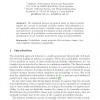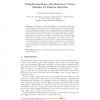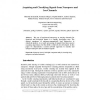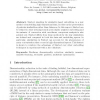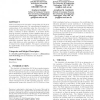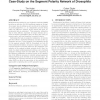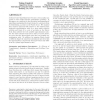ICANN
2009
Springer
14 years 6 months ago
2009
Springer
The statistical pattern recognition based on Bayes formula implies the concept of mutually exclusive classes. This assumption is not applicable when we have to identify some non-ex...
ICANN
2009
Springer
14 years 6 months ago
2009
Springer
This paper presents an application of multiple kernels like Kernel Basis to the Relevance Vector Machine algorithm. The framework of kernel machines has been a source of many works...
ICANN
2009
Springer
14 years 6 months ago
2009
Springer
The use of engineered nanopores as sensing elements for chemical and biological agents is a rapidly developing area. The distinct signatures of nanopore-nanoparticle lend themselve...
ICANN
2009
Springer
14 years 6 months ago
2009
Springer
We propose to model human reasoning tasks using completed logic programs interpreted under the three-valued Lukasiewicz semantics. Given an appropriate immediate consequence operat...
ICANN
2009
Springer
14 years 6 months ago
2009
Springer
Simbed, standing for similarity-based embedding, is a new method of embedding high-dimensional data. It relies on the preservation of pairwise similarities rather than distances. I...
ICANN
2009
Springer
14 years 6 months ago
2009
Springer
Backpropagation of errors is not only hard to justify from biological perspective but also it fails to solve problems requiring complex logic. A simpler algorithm based on generati...
GECCO
2009
Springer
14 years 6 months ago
2009
Springer
This work examines the dendritic cell algorithm (DCA) from a mathematical perspective. By representing the signal processing phase of the algorithm using the dot product it is sho...
GECCO
2009
Springer
14 years 6 months ago
2009
Springer
This work provides an analysis of using the evolutionary algorithm EPNet to create ensembles of artificial neural networks to solve a range of forecasting tasks. Several previous...
GECCO
2009
Springer
14 years 6 months ago
2009
Springer
Mathematical modeling for gene regulative networks (GRNs) provides an effective tool for hypothesis testing in biology. A necessary step in setting up such models is the estimati...
GECCO
2009
Springer
14 years 6 months ago
2009
Springer
Indicator-based algorithms have become a very popular approach to solve multi-objective optimization problems. In this paper, we contribute to the theoretical understanding of alg...
